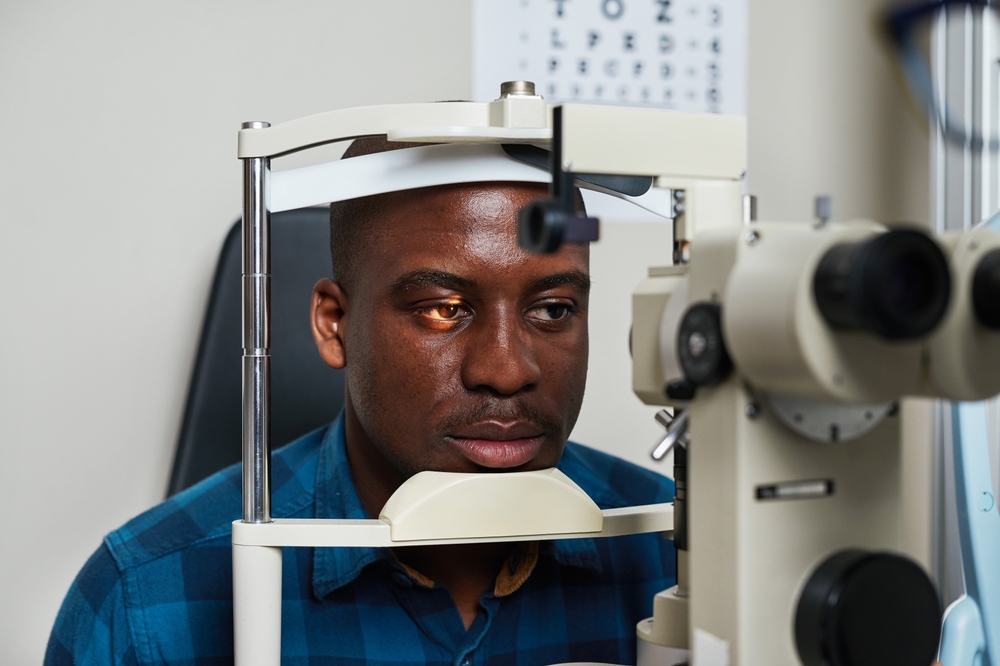The Comprehensive Guide to Diabetic Eye Exams
Blog:The Comprehensive Guide to Diabetic Eye Exams

The Comprehensive Guide to Diabetic Eye Exams
Living with diabetes requires careful attention to your overall health, and your vision is no exception. Diabetes can have serious implications for your eye health, potentially leading to serious conditions. Regular diabetic eye exams are essential to protect and preserve your vision.
Why Are Diabetic Eye Exams Important?
Diabetic eye exams are critical because they allow your eye care professional to detect and manage potential vision problems early. Diabetes can damage the small blood vessels in your retina, leading to diabetic retinopathy, which is a leading cause of blindness in adults. Early detection through routine exams can help manage these complications effectively and prevent permanent vision loss.
Additionally, diabetic eye exams can detect other vision issues like:
• Diabetic Macular Edema (DME): Swelling in the macula that can impair central vision.
• Cataracts: Diabetes increases the risk of developing cataracts at a younger age.
• Glaucoma: Elevated pressure in the eye, which can lead to optic nerve damage.
What Happens During a Diabetic Eye Exam?
A diabetic eye exam is more thorough than a standard vision test. Here’s what you can expect during your visit:
• Review of Medical History: Your optometrist will review your medical history, including how well your blood sugar levels are managed.
• Visual Acuity Test: This measures how clearly you can see at various distances.
• Dilated Eye Exam: Your optometrist will dilate your pupils to get a better view of your retina and optic nerve. This is crucial for detecting diabetic retinopathy, DME, and other issues.
• Optical Coherence Tomography (OCT): This imaging technology provides a detailed view of your retina, helping to detect even minor changes.
• Screening for Glaucoma: The pressure inside your eye will be measured to check for early signs of glaucoma.
How Often Should You Schedule a Diabetic Eye Exam?
Regular eye exams are essential, and an annual diabetic eye exam is recommended for most patients. However, individuals with advanced diabetic retinopathy, poorly controlled diabetes, or other risk factors may need more frequent checkups. Our optometrist can provide personalized recommendations based on your individual needs, ensuring your eye health is closely monitored.
Tips to Protect Your Vision
In addition to regular diabetic eye exams, here are some tips to safeguard your vision:
• Keep your blood sugar, blood pressure, and cholesterol levels under control.
• Avoid smoking, as it increases the risk of diabetic eye complications.
• Eat a balanced diet rich in leafy greens, fruits, and omega-3 fatty acids.
• Wear sunglasses to protect your eyes from harmful UV rays.
• Stay consistent with your diabetes management plan and follow your doctor’s recommendations.
Schedule Your Diabetic Eye Exam Today
Your vision is a vital part of your overall well-being, and diabetic eye exams are a key component of managing your eye health. At Texas State Optical Seguin, our team is dedicated to providing personalized care to help you preserve your vision for years to come. Early detection and proactive management can make all the difference in preventing serious eye complications caused by diabetes.
Take charge of your eye health by scheduling a diabetic eye exam at Texas State Optical Seguin. Visit our office in Seguin, Texas, or call (830) 392-1650 to book an appointment today.


